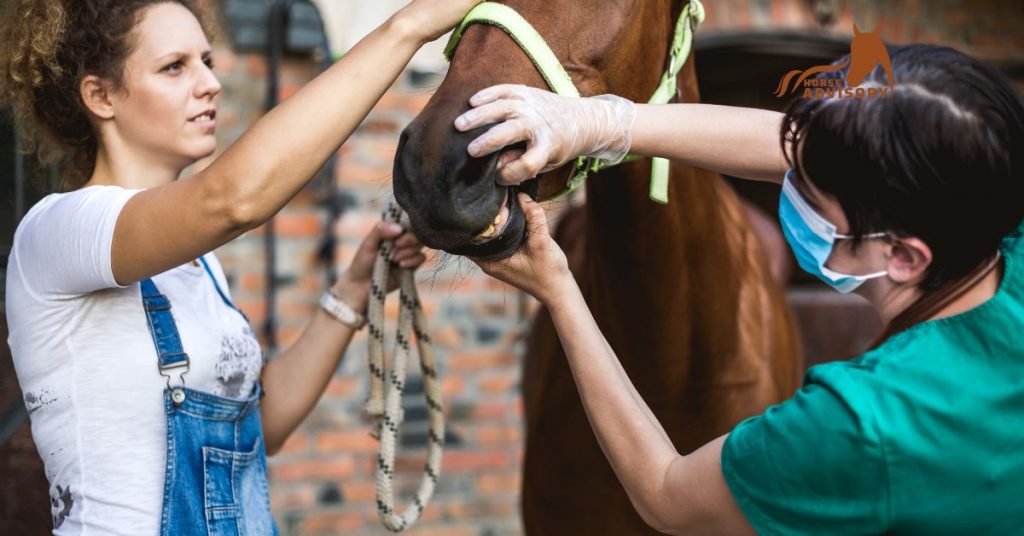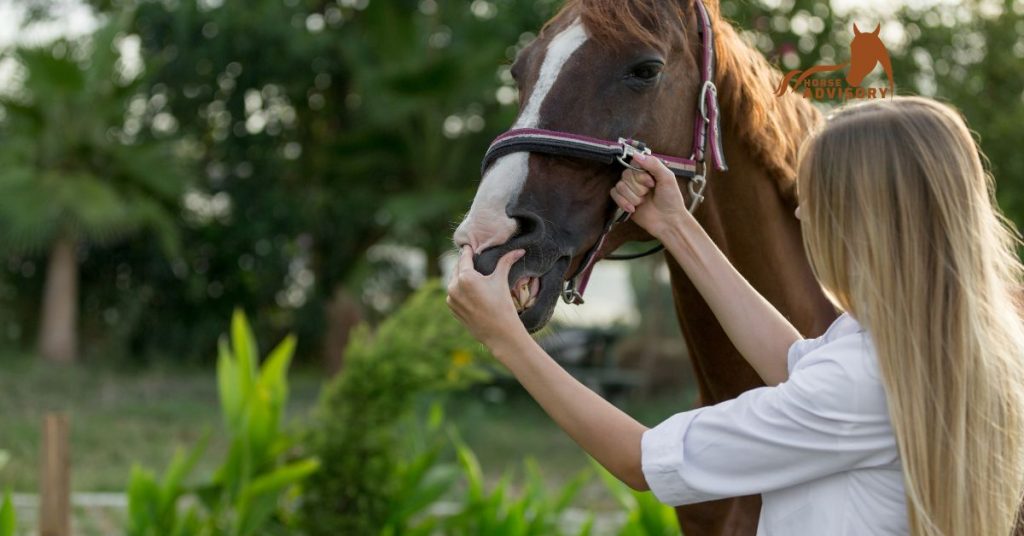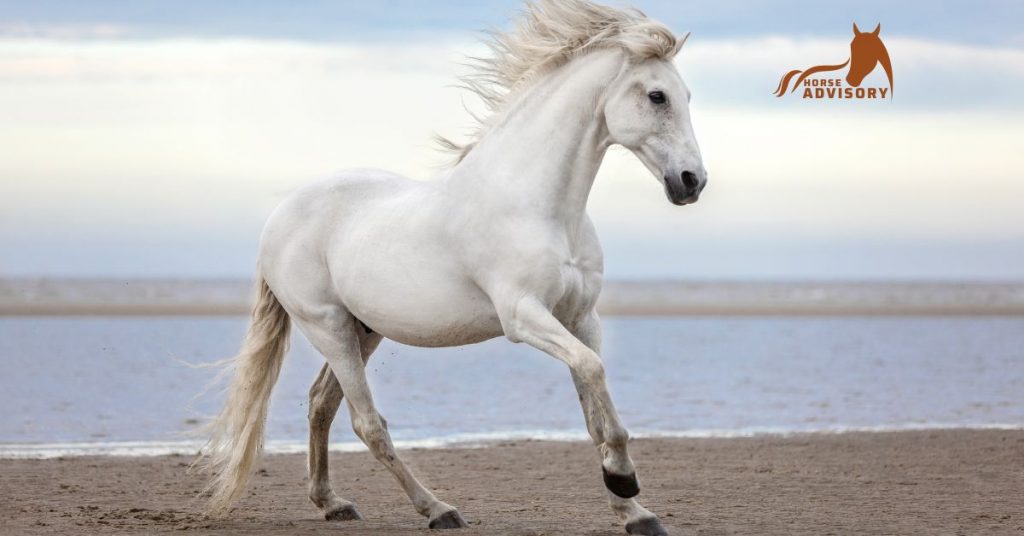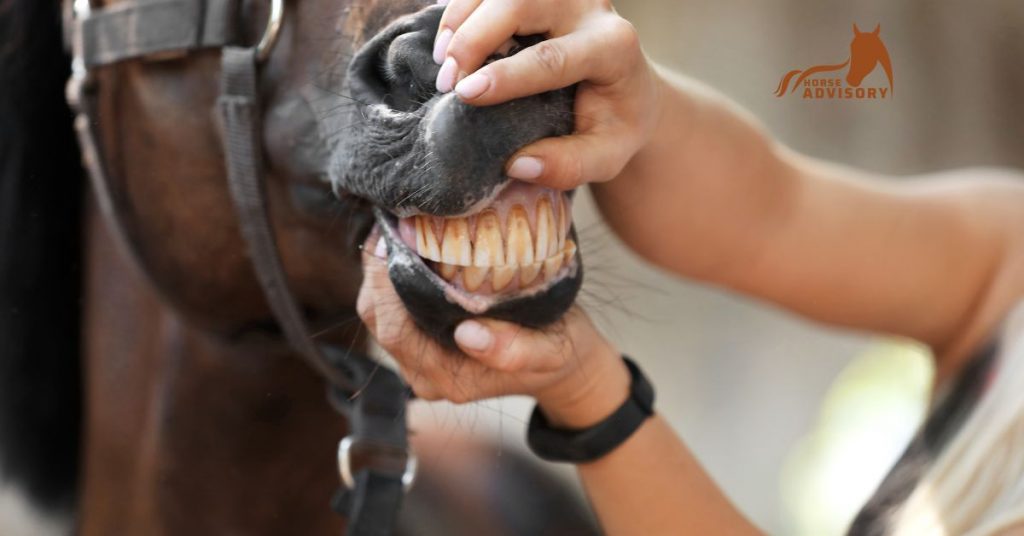
As a horse owner, it’s important to be able to recognize your horse’s age by its teeth. By doing so, you’ll be able to better care for your horse and ensure that it receives the appropriate level of dental care. In this blog post, we’ll discuss the different ways to identify a horse’s age by its teeth. We’ll also provide helpful tips on how to properly take care of your horse’s teeth. So, if you’re interested in learning more about how to assess your horse’s age by its teeth, then keep reading!
How to Recognize Horse’s Age by Its Teeth
1. The first thing to consider when determining a horse’s age by its teeth is the incisors. Incisors, which are the front teeth of the horse, can be used to distinguish between an older and younger horse. In younger horses (under 8 years old), you’ll notice that the edges of the incisors are sharp and well-defined. As a horse age, these edges will become more rounded.
2. The second way to identify a horse’s age by its teeth is through molars and premolars. Molars are located at the back of the mouth, while premolars are closer to the front. In young horses (under 5 years old), all of their molars should be smooth and have no ridges. In older horses (over 8 years old), however, you’ll notice small ridges or crevices in the molars.
3. The third way to identify a horse’s age by its teeth is through canines. Canines are the sharpest teeth in the mouth and they’re located between the incisors and premolars. In younger horses (under 4 years old), there should be no signs of wear on their canines. However, as a horse age, you might start to see some slight wear on these teeth.

Different Types of Teeth and Their Ages
1. Incisors are used for grazing and nipping food off of branches or grasses, so they tend to wear down more quickly than other teeth. An older horse will typically show more wear and tear on its incisors, as the edges become rounded with age.
2. Molars are located at the back of a horse’s mouth and are used for grinding food. In younger horses (under 5 years old), all of their molars should be smooth and have no ridges. As they age, however, you can expect to see some small ridges or crevices in these teeth.
3. Canines are the sharpest teeth in the mouth and they’re located between the incisors and premolars. In younger horses (under 4 years old), there should be no signs of wear on their canines. However, as a horse ages, some slight wear on these teeth is expected.
Signs of Tooth Wear and Tear
1. One of the most common signs of tooth wear and tear in horses is chipping or cracking in their incisors. This can occur due to overuse or from eating abrasive feed items like hay or grass. As horses age, you may also see yellowing or darkening around the edges of their incisors, which indicates that their enamel is wearing down.
2. Another sign of tooth wear and tear in horses is worn premolars, which can cause difficulty grinding food and lead to digestive problems. Horses with worn premolars will typically struggle to chew hard food items like hay and may have trouble maintaining their weight.
3. One of the most difficult signs of tooth wear and tear to spot is in horses’ canines. Over time, these teeth will start to chip or crack, which can make it hard for horses to bite down with enough force. This can cause difficulty when feeding hay or grain and should be addressed by your veterinarian as soon as possible.

Tips for Maintaining Healthy Horse Teeth
1. The best way to maintain healthy horse teeth is through regular dental care. Horses should have their teeth checked every 6-12 months, depending on age and diet. During a dental exam, your vet will look for any signs of abnormal wear or decay and recommend treatments if needed.
2. You should also avoid feeding horses sand or other abrasive materials, as this can increase the risk of tooth wear and tear. If possible, feed your horse hay that is soft and easy to chew. Additionally, adding a dental supplement to your horse’s diet may help keep their teeth clean and healthy.
3. Finally, it’s important to provide plenty of chewing activities for your horse. This includes offering them toys like balls or carrots that they can chomp on and providing access to grazing pastures with grasses or branches they can nibble on. These activities will not only help maintain healthy teeth but also provide mental stimulation for your equine companion!
Overall, understanding the signs of tooth wear and tear in horses is essential for ensuring their oral health. Through regular dental care, careful diet management, and plenty of chewing activities, you can help your horse maintain healthy teeth for many years to come.
Conclusion
Taking good care of your horse’s teeth is essential for their health and well-being. Through regular veterinary checkups, careful diet management, and plenty of chewing activities, you can help protect your horse’s teeth from wear and tear. Additionally, recognizing the signs of tooth wear early on will allow you to address any problems before they become serious. With proper dental care, your horse will have healthy teeth for years to come!
Frequently Asking Questions
Q: How often should I have my horse’s teeth checked?
A: It is recommended that your horse have its teeth checked every 6-12 months, depending on age and diet.
Q: What are the signs of tooth wear and tear in horses?
A: Signs of tooth wear and tear in horses include chipping or cracking in incisors, worn premolars, and chipping or cracking of canines. Additionally, yellowing or darkening around the edges of incisors is a sign of enamel wearing down.
Q: How can I protect my horse’s teeth from wear and tear?
A: You can protect your horse’s teeth from wear and tear by providing regular dental care, avoiding feeding sand or other abrasive materials, and offering plenty of chewing activities. Additionally, adding a dental supplement to your horse’s diet may help keep their teeth clean and healthy.
Q: Is it safe to feed my horse hay?
A: Yes, feeding your horse hay is generally considered safe if it is soft and easy to chew. However, you should avoid giving your horse hay that is too hard or has sharp edges as these could cause tooth wear and tear. Additionally, adding a dental supplement to your horse’s diet may help keep their teeth clean and healthy.
Q: What are the benefits of providing plenty of chewing activities for my horse?
A: Providing plenty of chewing activities for your horse can help maintain healthy teeth and provide mental stimulation. Offer toys such as balls or carrots that they can chomp on, and provide access to grazing pastures with grasses or branches they can nibble on. These activities will not only help keep their teeth clean but also give them something to do!
Q: How do I know if my horse needs dental care?
A: It is important to have your horse’s teeth checked regularly by a veterinarian. During a dental exam, your vet will look for any signs of abnormal wear or decay and recommend





